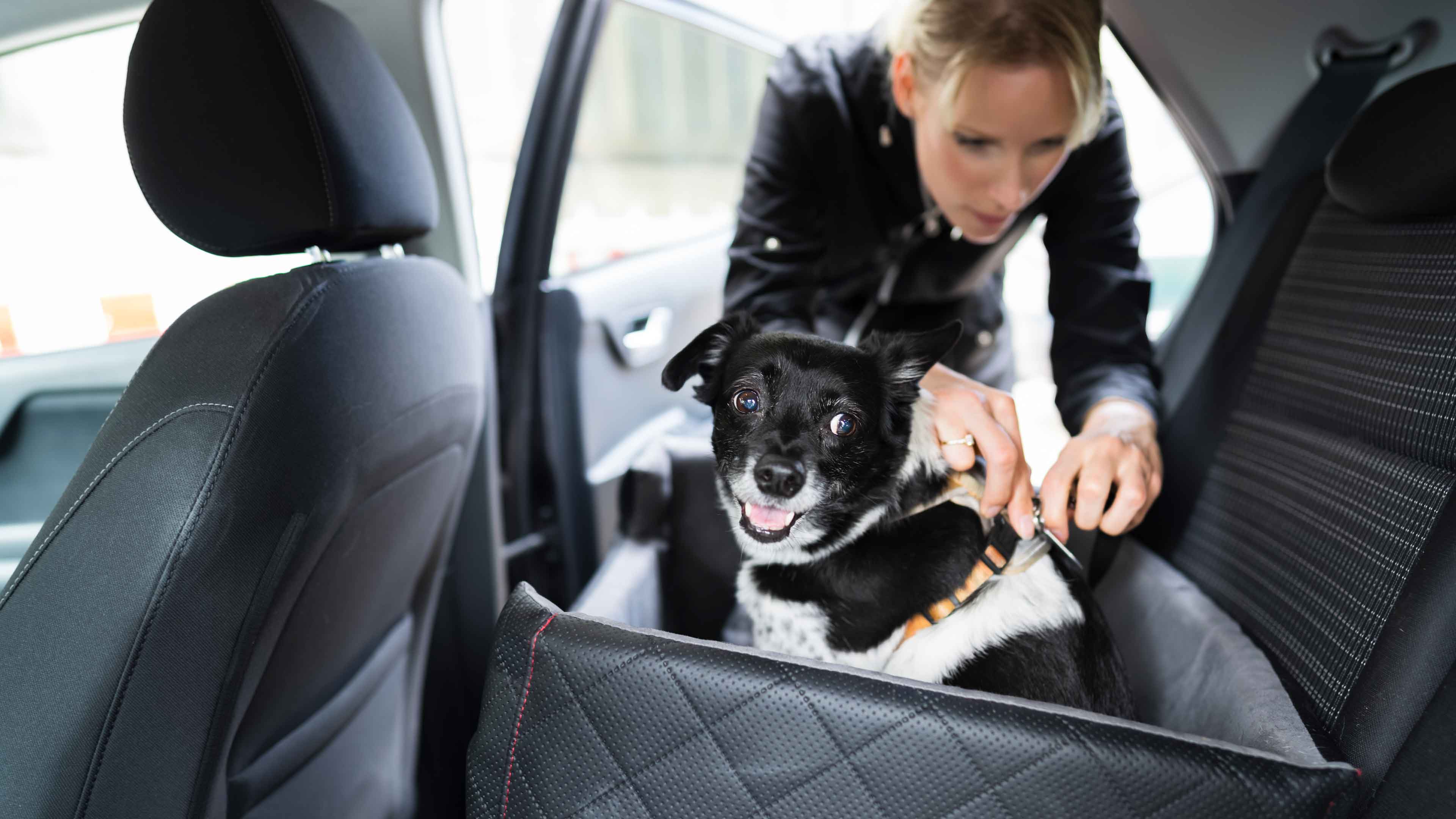getting new pets the socialization they need
Since we’ve all been spending more time at home, maybe you decided it was time to bring a furry new friend into the mix. If so, congrats! We bet you and your pal have a lot of fun new things to learn – like what’s OK to sleep on, the best places on ears to scratch, and just how exciting dinnertime can be.
These days, however, one aspect of pet ownership may be especially challenging: Socialization.
Socialization is all about teaching your pet to happily and safely meet and greet new people or other pets. This may seem tough when we’re social distancing – but we just need to be a little creative. And the Banfield Pet Hospital blog is here to help.
First off, this is a life-long process
Teaching your pet the behaviors you want to see is a commitment, but it’s one that ultimately rewards you both. If you can, start when your pet is young. But rest assured that grown pets can also learn to socialize beautifully in new situations with a little patience and loving care.
Safe and secure is the secret to success
Fear and insecurity makes an unhappy, unfriendly animal. So your first step is to ensure your furry friend feels secure. This doesn’t mean letting them rule the roost! Be calm, reassuring, and firm, and reward good behavior with petting, praise, and even a few little treats.
This works for dogs and cats, believe it or not. Cats are famously independent, but they still need to feel safe and secure to be at their best. And it never hurts to reward them with their favorite treats or toys when new people or pets are around.
It should go without saying, but never physically punish your pet if they flunk a few rounds of Socialization 101. You want your buddy to associate new people and animals with fun, not fear. Consistently reward the behavior you want to see, and you’ll see more of it.
Slow and steady
Maybe you’re already at home with other pets and people. Great! Make sure to introduce your new pet, and have them spend time with everyone in the house. But start slow. Too much, too soon, can be overwhelming for everyone, so take it in steps. For example, separate your new pet safely behind a door for a few days, so your other pets can get used to the sounds and smell of their new housemate before meeting them properly. Leashes, kennels, and gates are also useful for getting to know each other – especially when large animals are meeting smaller ones.
Socializing with social distancing
These days, up-close sniffing or snuggling with outside people or pets might not be possible for your dog. But there’s a lot of socialization that pets can do from a distance. For example, are there other people you interact with from 6 feet away? Do you have neighbors with pets that your pet can see through a fence, or while on a walk? Is there a nearby park where you can teach your dog it’s cool to see other dogs on a leash?
Whenever your dog meets someone new, reward them with praise and petting (and maybe even a few small treats) when they don’t bark or lunge. And keep an eye on their body language. If they seem stressed or nervous – cringing, tail between their legs, their ears back – it’s time to give it a rest and try again later when they’re calm.
Variety is the spice of life
Once things open up, many more options for socialization will become available, like group obedience classes for dogs. Even now, you may be able to consult with a professional trainer or Board-certified veterinary behaviorist online. No matter when or where you begin, though, it’s a great idea to introduce your pets to animals and people of all ages, shapes, and sizes. A well-socialized pet is a happy pet, and makes others happy, too.
 Mites and mange
Mites and mange Podcast - Not Just Fluff
Podcast - Not Just Fluff











